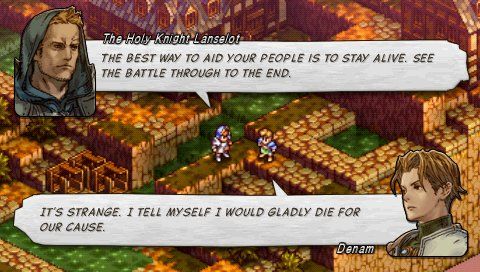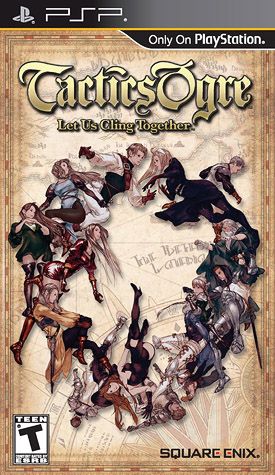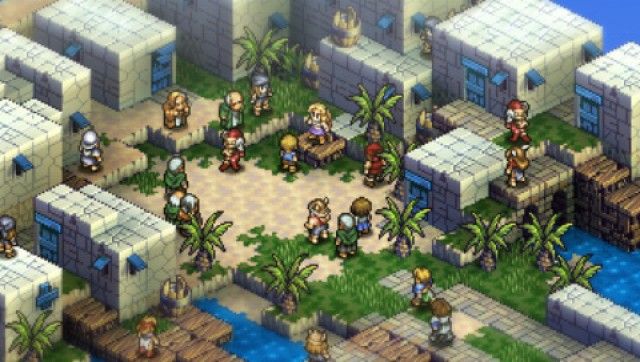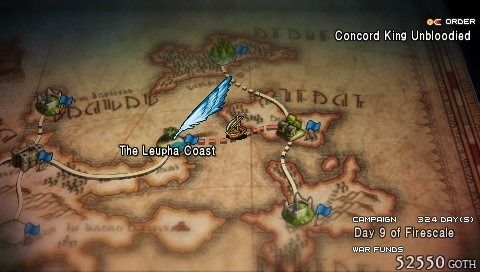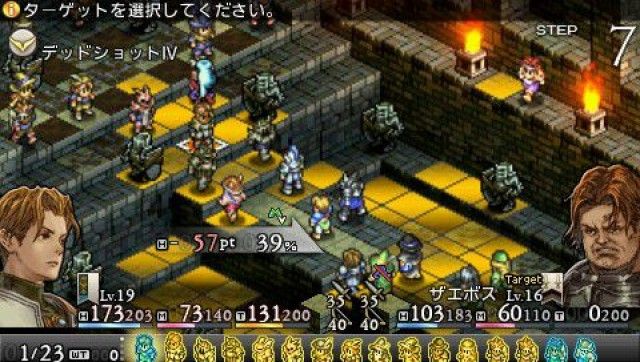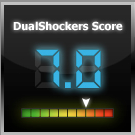I’m not a huge strategy RPG geek like some people out there, although there have been some shining moments in the genre for me, including the revered Final Fantasy Tactics and the highly underrated Record of Agarest War. Still, the slow, grind-heavy battles that seem to infiltrate the genre are really what turn me off. Nothing changes here, with Square-Enix’s remade strategy RPG title Tactics Ogre: Let Us Cling Together.Yes, you will find a typical convoluted story, involving mystery, intrigue, politics, fantasy elements, dark magic and a world in a whole mess of trouble. These are staples of the RPG genre, let’s not fool ourselves. This story picks up shortly after a power struggle that involves three factions, some pompous royalty and even an ethnic cleansing campaign. It follows a young man and his eventual rise to power, culminating in multiple possible endings, not all of which are happy. I have to hand it to the game here, there is a TON of replay value in the story alone, not to even mention some of the mechanics that are at play.
Unfortunately, the interesting and unpredictable quirks to the story are few and far between. If you have any experience with the role-playing genre at all, you can see what’s coming from a mile away. It’s like watching the 100th episode of your favorite crime drama – you pretty much known how it’s going to go and can call who killed who within the first 15 minutes. The unpredictable parts are exactly what I mentioned earlier – the convoluted parts. Seriously, half the stuff these characters say make absolutely no sense at all.
Not only is there the obvious replay value inherent in “chose your own class and level them up” type of game, but the story itself allows for multiple choices throughout, as well as seeing the consequences of those actions at a later point in the game. Think of it, if you will, as a precursor to all those BioWare titles that claim to have “invented” the “your choice matters” trope in RPGs. Tactics Ogre came long before those, and still provides much of the same design philosophy in the decision making aspect.
The problem with the original game when it was released back in 1995 was that it was very difficult to see those multiple endings and the various branching story arcs because the game was, at the very least, 40 hours long. Want to see everything? You’d have to play through the entire game several times, which is rather unpractical. In this PSP remake, a special feature was added that allows you to go back in time and explore various branching paths and different decisions, which allows you to get a better grasp of what’s going on and how your decisions will affect the game. This, I think, is an excellent feature that improves the overall quality of the experience. Like I’ve mentioned, the story is rather convoluted and hard to follow at times, seeing how your decisions affect it can only help in attempting to understand it.
As far as the visual appeal of the title goes, I really haven’t seen a JRPG that hasn’t looked great on the PSP screen, and this one is no exception. It has a distinct Final Fantasy Tactics feel, and that quality is there. C’mon, it’s Square-Enix people, would we expect anything less? The battle animations are cool and flashy, an improvement over the original. The sound and dialog are decent. The music is great, but the written dialog itself can be hit or miss at times.
Another thing I always disliked about this sub-genre is that you tend to get bogged down in menus, spending untold minutes scrolling through them to get where you need to go. Mind you, I don’t have a problem with spending time tweaking your characters, setting up your battle party, outfitting them, spending time at stores and what not, all to be able to go at battles with the best possible team. I just have issues with the endless number of menus that are presented to the player that need to be used to get you where you need to go, so to speak. However, this is par for the course when it comes to the genre, so I’m going to assume if you’re delving into this remake you’re well aware of what you’re getting yourself into.
Battle proceeds much like you would expect it to, with your side taking turns in battle with the game-controlled enemies. You can move, then perform an action, then position yourself as best you can to fend off an enemy attack in the back end of the round. When you complete a battle, you’re rewarded with the usual staples like cash, experience points and the like. One thing I did appreciate is that individual characters themselves don’t level up, but the entire class does. If you have one archer in your battle party who gains experience, ever archer you have will gain that experience and level up as a class. While this doesn’t necessarily cause you to go outside the norm and chose characters for your battle party that you may not want to use (and why should it?), it does help a good number of your total available characters to proceed through the game at roughly the same pace.
There is a downside to this, as well. When new, fancy classes open up to you, typically you want to try them out, right? I’m big on experimentation, so when a new class opens up, I want to switch my main character to that class to try it out. Unfortunately, since classes level up instead of the characters themselves, when you switch to a brand new class you’re knocked back down to level one and must spend several battles (or more?) leveling your character up again to make them useful.
As if to go directly opposite the class leveling system, only individual characters that contribute to the battle get skill points for unlocking new abilities. This seems like a step forward and a step back, and I’m unsure why there are two different character advancement options that work on different requirements. For everything that the class leveling helps with, the fact that characters earn skill points on an individual basis completely counteracts. I don’t quite see the wisdom in these two very opposing systems of character progression.
While the game is a pretty great example of what a strategy RPG should be, it also has issues with character AI – very big issues. I nearly threw my PSP across the room a couple times, lamenting the idiocy of friendly AI, especially during escort quests. These characters, which you’re supposed to be protecting, have absolutely no self-preservation instincts at all. None. They will rush headlong into a group of five enemies and you are left to pick up the pieces. With all the other changes they made to this remake, you would have thought they could have spruced up the friendly AI a bit to make it more, I don’t know, believable.
The problem overall is that this is still a game from 1995. Sure, the difficulty is lessened a bit from the original, and they added a great mechanic to allow you to experience more of the branching story lines and plot points, but this is still a 1995 strategy RPG and includes many, many mechanics and visuals from that era. Those don’t sit too well with gamers today.
You may think I’m really beating up on the game, but I just take it for what it is – a very well done classic strategy RPG. If you like the things I dislike about it, you definitely are going to want to add this one to your library. However, it isn’t necessarily that I disliked the things above that I mentioned, it’s more the fact that those features or mechanics just don’t jive with me, living in 2011. Tactics Ogre: Let Us Cling Together really is a shining example of an old-school strategy RPG, with a few quirks. If you have a PSP and enjoy that sub-genre, you shouldn’t pass this one up. For most others, however, this will likely turn out to be a frustrating experience on many different levels.
-
Title: Tactics Ogre: Let Us Cling Together
- Platform Reviewed: PSP
- Developer: Square-Enix
- Publisher: Square-Enix
- MSRP: $39.99
- Release Date: February 15, 2011
- Review Copy Info: A copy of this title was provided to DualShockers, Inc. by the publisher for the purpose of this review.
Tactics Ogre: Let Us Cling Together
- Platform(s)
- Nintendo DS
- Released
- October 6, 1995
- Developer(s)
- Square Enix
- Publisher(s)
- Square Enix

